Today, we’re diving into a captivating experiment that introduces the concept of surface tension: the soap powered boat experiment. This hands-on science activity allows kids to observe firsthand how soap influences the movement of a small boat on the water’s surface. Plus, it’s a great way for kids of all ages to play with science.
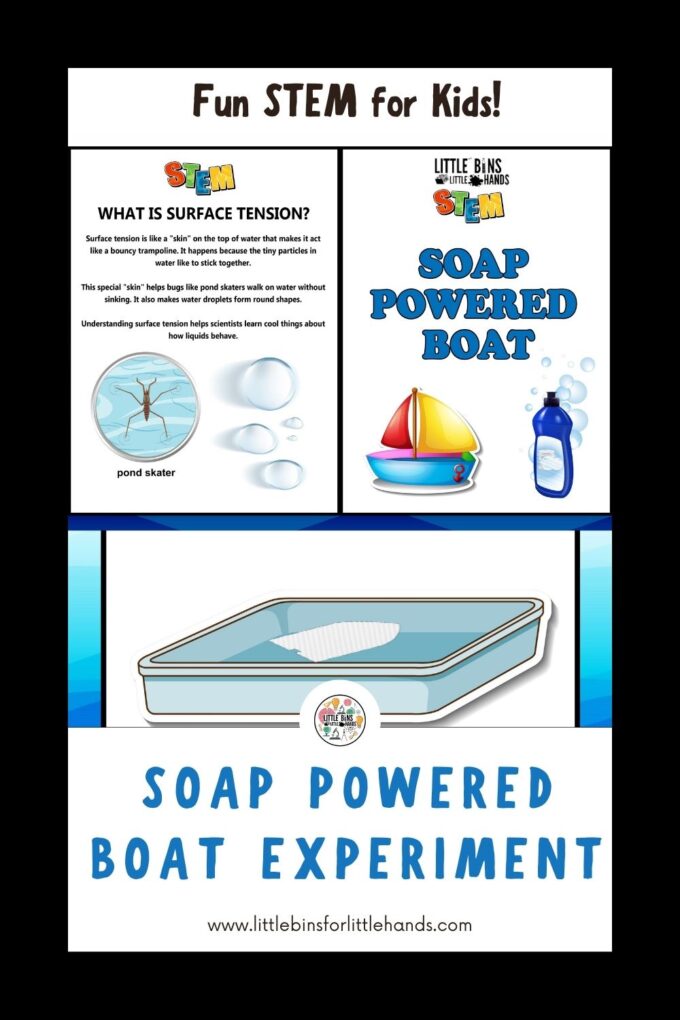
Fun Surface Tension Experiments
Exploring surface tension through hands-on experiments offers an engaging way for kids to discover the fascinating properties of liquids. From observing the mesmerizing movement of a soap-powered boat to experimenting with other everyday materials, these activities not only spark curiosity but also lay the foundation for understanding fundamental scientific concepts.
Find more surface tension experiments here.
Watch the Video:
How to Set Up Soap Powered Boat Experiment
Setting up the Soap-Powered Boat Experiment is straightforward and requires only a few materials. Here’s a step-by-step guide to get you started:
Materials Needed:
- A shallow container or basin large enough to float the boat and hold water
- Boat printable
- A small, lightweight boat (can be made of materials such as plastic, foam, or balsa wood)
- Liquid soap or detergent
- Water
- Optional: stopwatch or timer for measuring speed
- Printable science journal sheets
Instructions:
Follow along with the video above, or join us in the club for a printable version of the video!
Step 1: Prepare the Container. Fill the shallow container or basin with enough water to float the boat without touching the bottom of the container.
Step 2: Design and Prepare the Boat. Design a small, lightweight, and buoyant boat. You can construct the boat using foam board, plastic bottles, or lightweight wood. Make sure it floats!
Step 3: Add Soap. Add a small amount of liquid soap or detergent to the water in the container. The soap should be enough to change surface tension noticeably but not so much that it becomes too sudsy.
Step 4: Test the Boat. Gently place the boat on the surface of the water and observe how it floats and moves without any external force.
Step 5: Activate the Boat: Add a drop of dish soap to the water’s surface near the back of the boat to activate the soap-powered propulsion.
Step 6: Observe and Measure Watch as the soap disrupts the water’s surface tension and propels the boat forward. If desired, use a stopwatch or timer to measure the time the boat travels a certain distance.
Step 7: Experiment and Adjust. Experiment with different variables, such as the amount of soap used, the design of the boat, and the water conditions, to see how they affect the boat’s speed and movement. Take note of any patterns or observations.
Step 8: Record Your Findings Record your observations, measurements, and any adjustments made during the experiment.
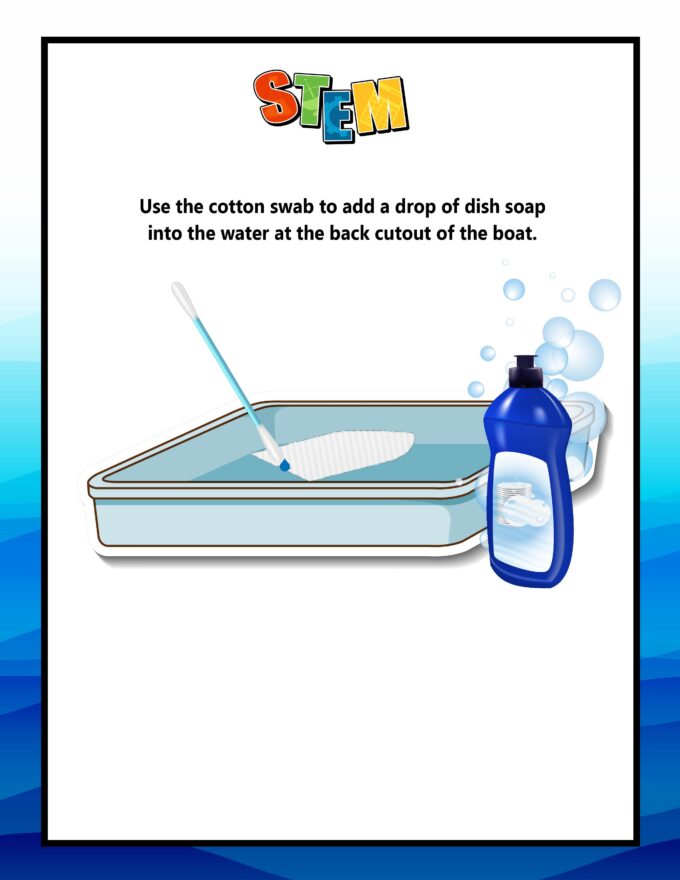
Soap Powered Boat Science
The Soap-Powered Boat Experiment demonstrates the fundamental principles of surface tension and propulsion. When added to water, soap disrupts the cohesive forces at the water’s surface, reducing surface tension. This disruption creates a gradient in surface tension, with higher tension at the water’s surface and lower tension beneath.
Gradient: A gradient in surface tension means that the strength of the “skin” on the surface of a liquid isn’t the same everywhere. It changes across the surface. This can happen when adding substances like soap. It can weaken the surface tension in some areas and strengthen it in others.
When the soap boat is placed on the water, the higher surface tension at the front of the boat pushes it forward, while the lower tension at the back allows it to move smoothly through the water. This experiment illustrates how a common material like soap can profoundly affect the behavior of liquids.
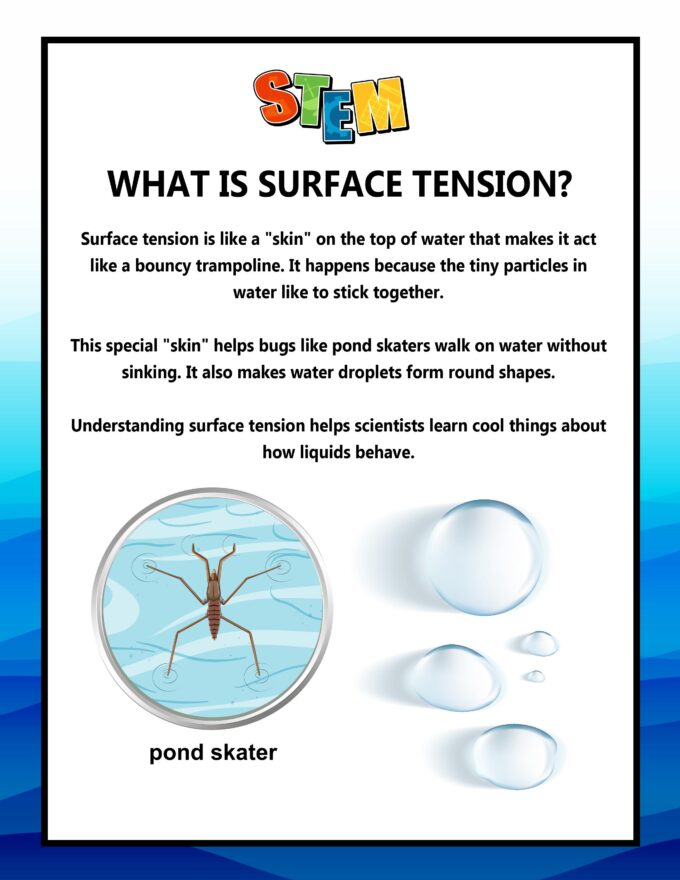
Add the Scientific Method
Incorporating the scientific method into the Soap-Powered Boat Experiment enhances the process of inquiry and discovery.
Science projects are an excellent tool for older kids to demonstrate their science knowledge. They can be used in various environments, including classrooms and groups.
Kids can take everything they have learned about using the scientific method, stating a hypothesis, choosing variables, making observations, and analyzing and presenting data.
Want to turn one of these experiments into an excellent science fair project? Check out these helpful resources.
More Science Experiments for Kids
Here are similar experiments that explore different aspects of surface tension, buoyancy, and fluid dynamics:
- Walking Water Experiment
- Floating Paperclip Experiment
- Dancing Raisins Experiment
- Capillary Action Experiments
- Buoyancy: Penny Boat Challenge
- Surface Tension Experiments
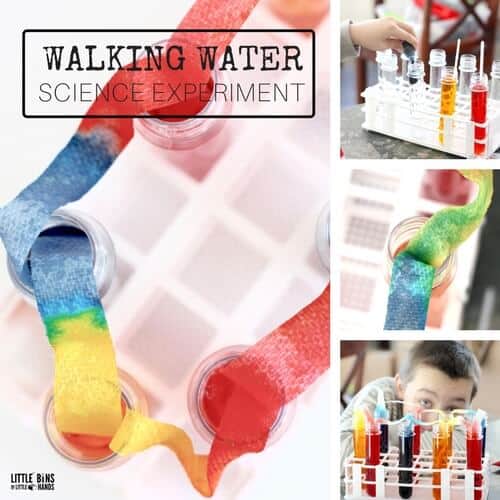
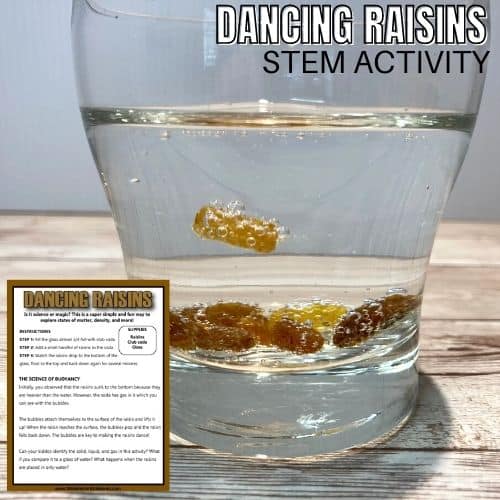
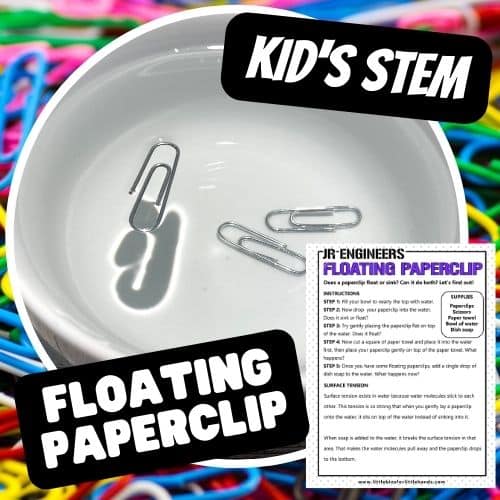
Printable Science Projects For Kids
If you’re looking to grab all of our printable science projects in one convenient place plus exclusive worksheets and bonuses like a STEAM Project pack, our Science Project Pack is what you need! Over 300+ Pages!
- 90+ classic science activities with journal pages, supply lists, set up and process, and science information. NEW! Activity-specific observation pages!
- Best science practices posters and our original science method process folders for extra alternatives!
- Be a Collector activities pack introduces kids to the world of making collections through the eyes of a scientist. What will they collect first?
- Know the Words Science vocabulary pack includes flashcards, crosswords, and word searches that illuminate keywords in the experiments!
- My science journal writing prompts explore what it means to be a scientist!!
- Bonus STEAM Project Pack: Art meets science with doable projects!
- Bonus Quick Grab Packs for Biology, Earth Science, Chemistry, and Physics








